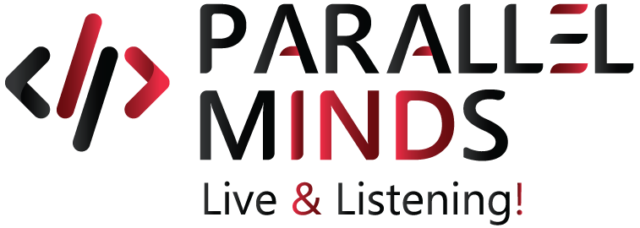Mendix and OutSystems: To Choose Between Two Low-Code Industry Heavyweights
Mendix and OutSystems are two proven powerhouses in the low-code development industry, and professionals on the hunt for enterprise application development often have to consider choosing between these two platforms. With a long list of core strengths to warrant each choice being a viable one, it isn’t easy to choose one over another. While a comprehensive evaluation of specific project and application needs is a great way to move forward, a few essential core factors help you make the right decision too.
Evaluating Core Strengths
Mendix: Mendix primarily relies on the fundamental strengths of flexibility and collaboration to create a platform that works equally well for IT teams backed by professionals as well as the emerging breed of citizen developers. It revolves around crucial components such as user experience (UX), easy iterations, and rapid prototyping.
OutSystems: OutSystems depends on solid integration scenarios, complex workflows, and data-centric applications to offer speed and scalability. It primarily focuses on enterprise-grade applications and delivers performance and customization in critical scenarios.
Key Areas of Comparison
User Interface
Mendix: With visual modeling and a user-centric design, Mendix offers a drag-and-drop interface builder and demarcates the interface from back-end logic with the help of pre-designed widgets. This makes collaborative efforts with business users easy and enables rapid prototyping while offering a strong user experience.
OutSystems: While fundamentally visual, OutSystems also offers the incorporation of traditional coding elements, added flexibility in CSS styles, and finer control over interface elements. These components make it the perfect playground for experienced developers who aim to offer more complex UI requirements with an array of fine-tuned design elements.
Development Experience
Mendix: Essentially user-friendly in comparison, Mendix’s visual approach makes it easy for citizen developers to develop solutions even when they do not know deep coding. The visual models offer business-friendly solutions that can be applied across multiple departments and functions. Mendix quickens the pace of early development and enables higher levels of abstraction from complex coding.
OutSystems: OutSystems offers a slightly steeper learning curve and requires some amount of developer knowledge, making it comparatively difficult for citizen developers to hit the ground running without knowledge of web development concepts to back them up. Since it offers added control for complex scenarios, it is a favorite with more experienced developers and IT pros. With less abstraction from the underlying code, OutSystems works well for expert teams requiring complex customizations.
Scalability
Mendix: Cloud-native architecture makes Mendix apps perfect for the cloud, whether public, private, or hybrid. This allows for seamless scaling up or down of resources across the cloud structure. Since it uses containers for the deployment phase, it also allows for individual elements of an application to be scaled separately. The feature of automated scaling based on demand assists in the adjustment of resources to fulfill scales in demand.
OutSystems: OutSystems leans more towards enterprise-grade scalability, and accordingly offers a design based on architectural upgrades and elements that offer fine-tuned performance. Deployment support spans from cloud and on-premises to hybrid solutions, catering to the entire spectrum of enterprise needs. OutSystems handles demand spikes with ease and addresses bottlenecks effectively, thanks to solid load-balancing abilities that seamlessly distribute traffic across servers.
Performance
Mendix: While rounds of rigorous performance testing remain key, Mendix is an easy choice when your requirements revolve around speedy development cycles and quick and easy deployments. It is perfect for common use cases and is quite capable of managing moderate to large-scale applications in such environments. The platform’s cloud capabilities give it an advantage in cloud-specific use-case scenarios where auto-scaling and ground-up cloud architecture are primary requirements. It is difficult to surpass Mendix’s capabilities when the primary goal is to deliver a decent and workable solution quickly.
OutSystems: OutSystems offers experienced IT teams a distinct advantage when the requirements revolve around massive amounts of data, complex inventory management, enterprise deployment and scaling, and performance-critical optimizations. Whether it is high transaction volumes, complex business logic, or legacy system integrations, elements such as fine-tuned control, a more customizable approach, highly detailed workflows, massive amounts of conditional calculations, or process cycles with defined service level agreements (SLAs), OutSystems offers more dependability, responsiveness, and engineering.
Business Process Management (BPM) Abilities
Mendix: A visual workflow editor enables process modeling via drag-and-drop elements, thus integrating multiple actionable decision points and data sources. The platform is agile, promotes collaborations, offers swift iterations and adjustments, and acts as a catalyst between the business and IT teams by addressing gaps in design and execution. Mendix is an easy choice in moderately complex business environments requiring quick implementation.
OutSystems: A process orchestration heavyweight, the BPM abilities of OutSystems remain unmatched in environments where granular control, large-scale process automation, comprehensive process monitoring interfaces, improved process audits, and sophisticated exception-handling mechanisms are essential requirements. Although these deliverables come with a steeper learning curve, the added streamlining and extensive event-driven abilities make it a perfect BPM partner.
Integration
Mendix: Committed to user-friendly integration, Mendix primarily relies on pre-built plug-and-play connectors and APIs and puts together a visual interface to streamline quick connections with existing common business systems. A modular approach allows citizen developers to leverage the advantages of optimal integration without the need for deep coding. The platform efficiently and quickly connects with standard systems and gets your data interactions up and running with minimal effort or complications.
OutSystems: With its distinctive and comprehensive fleet of integration tools, OutSystems creates an environment where every minute aspect of integration can be carefully monitored and deployed with niche and bespoke systems, even when they are traditional and offer standardization limitations. Key integration advantages include granular control that allows highly efficient data mapping, sufficient support for a wide range of protocols, added control over performance-critical external systems, and a substantial library of connectors.
Deployment
Mendix: With a cloud-native philosophy as a key driver, Mendix’s deployments are essentially designed for the cloud, specifically in environments that follow the latest DevOps practices. With public, private, hybrid, and Mendix cloud solutions, the platform covers a comprehensive array ranging from public cloud providers like AWS and Azure to Google Cloud and private cloud infrastructures where security and control are crucial to hybrid deployments to cater to more complex enterprise scenarios requiring hybrid solutions.
OutSystems: A sophisticated yet highly capable tool from OutSystems called LifeTime effectively manages all complex-environment deployments, thus making the platform an ideal choice for both cloud and on-premises deployments. While promoting DevOps best practices, OutSystems also offers easy integrations with external Continuous Integration/Continuous Delivery (CI/CD) pipelines. The platform is highly adaptable and addresses pre-existing preferences and complex deployment environments via granular control and flexible hybrid models.
Pricing and Licensing
Mendix: The pay-as-you-go approach that Mendix offers proves feasible for businesses indulging in small-scale deployments or variable-use projects, while its wide-ranging pricing tiers (free, standard, and premium) allow for added flexibility. The platform only increases costs when you add apps, complexities, user volumes, support requirements, features, or resources.
OutSystems: The subscription-based pricing model offered by OutSystems is aimed at enterprise-scale development where long-term plans demand predictable investment. Its various editions (basic, standard, and enterprise) support the entire range, from small-scale development to comprehensive enterprise solutions. Development, testing, production environments, anticipated user volumes, and mission-specific support requirements primarily influence pricing.
The Parallel Minds Approach
At Parallel Minds, our extensive development experience with both Mendix and OutSystems has helped us define every core strength associated with the platforms. In addition to applying our own expertise, we also leverage the advantages of regular interactions with developer communities to access and implement the latest learning resources, experiments, and discoveries. While both platforms are highly capable of providing comprehensive and dependable solutions, we rely on our extensive client, industry vertical, and requirement-specific research to choose a platform to offer optimized deployment.
Share:
More Posts

Value Stream Mapping – Current and Future States
If you’ve ever witnessed a brilliant idea with the potential to develop into a successful

The Digital Evolution of a Lean Manufacturing Ecosystem: The Turnaround from Waste to Profit
As leaders in the tech space, we owe it to our respective industries to revolutionize







